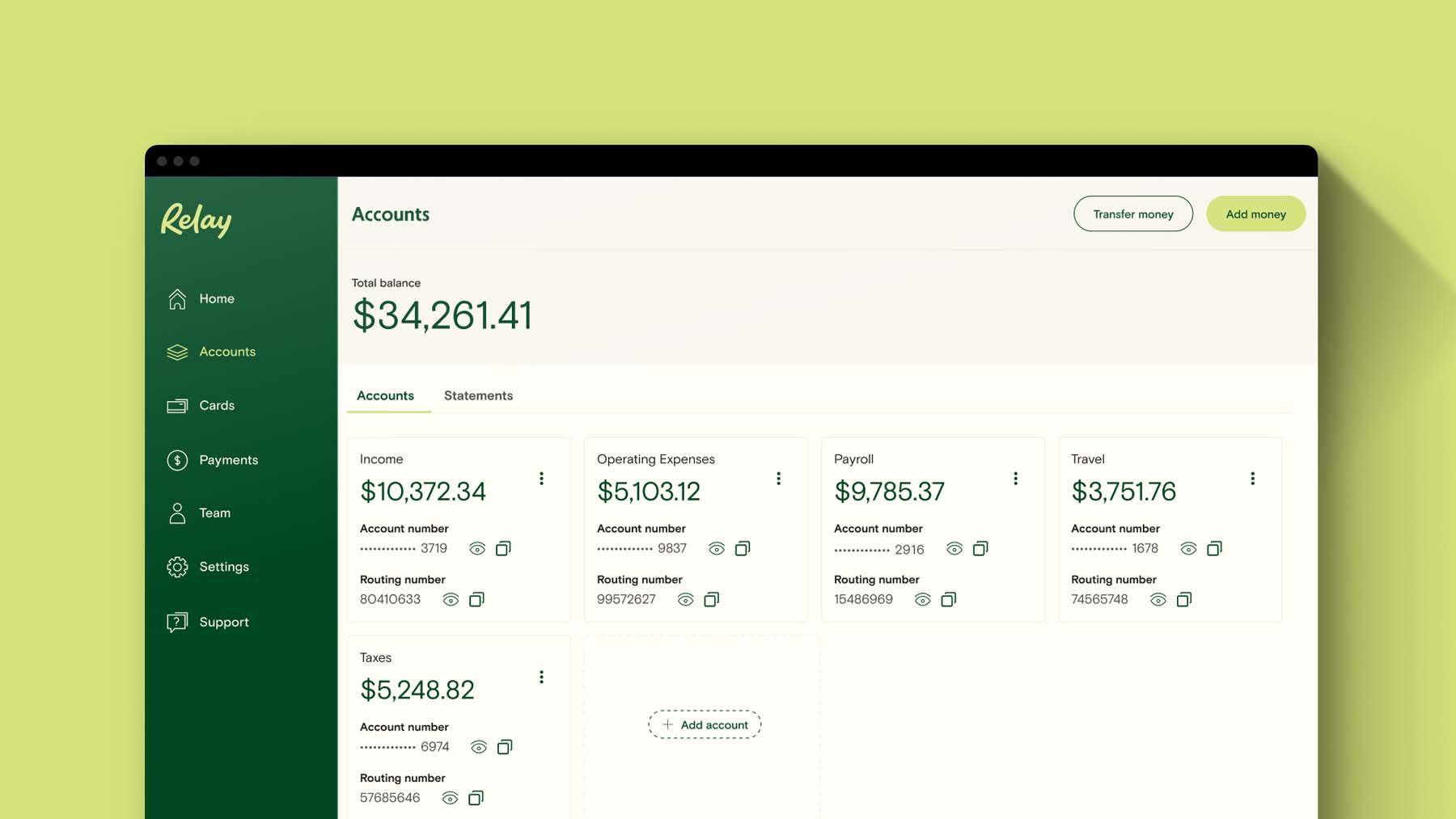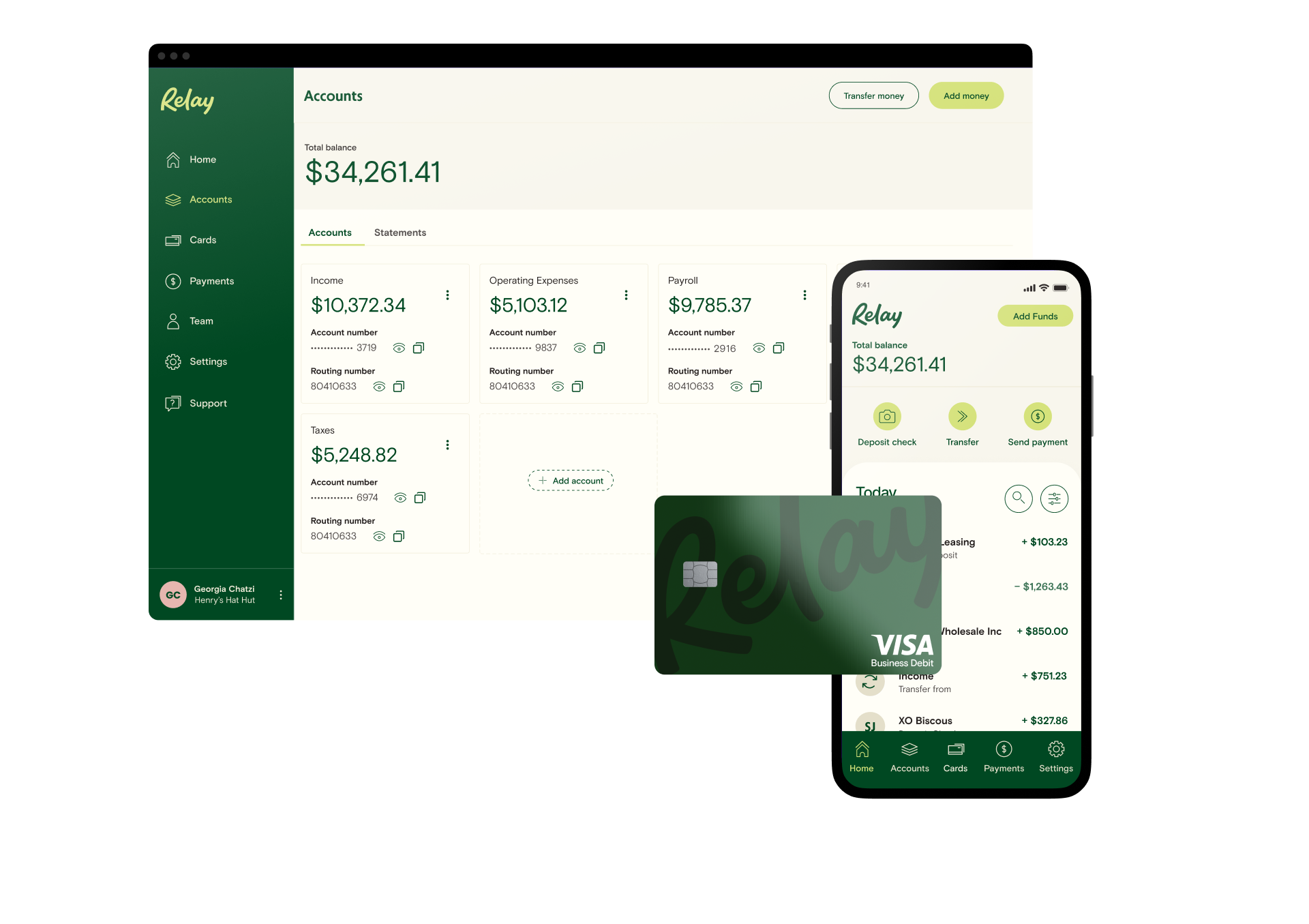The envelope budgeting method dates back decades. You may remember your parents or grandparents keeping envelopes of cash in the house for dining out, groceries, gas, rent, or other household expenses. They might have called it “cash stuffing”, and many knew it as a popular way to save money. 💸
Fast forward a few years and this method is just as relevant today, though most people choose to use a digital envelope system over physical envelopes. This helps eliminate the hassle of physical envelopes while still allowing you to keep track of every dollar spent. The best part? Envelope budgeting isn’t just good for your personal expenses—you can use it to manage your business’s cash flow, too! 🤩
In this article, you’ll learn about the digital envelope system from a small business lens and how it can help you stick to your business budget. 💵
In this article:
What is a digital envelope system?
The digital envelope system is a budgeting and money management technique that helps businesses stick to a budget and control spending. ✉️
You can implement it by creating different envelope categories or spending categories, with each envelope representing a type of business expense—like payroll, taxes, marketing, operating expenses, or owner’s pay. Then, you set a budget for each expense based on your monthly income. 💲
The fundamental idea behind envelope budgeting is simple: since you are taking your revenue and portioning it out, you cannot spend more than what you earn 🙅♀️ (or what your business already has in its checking account).
Physical cash envelopes vs. digital cash envelopes 💻
With the rise of debit cards, credit cards, and payment apps, it’s no surprise that society is slowly moving toward more digital methods of money management. This makes the traditional cash envelope system outdated, especially for business owners who move large sums of cash for monthly expenses. 💸
Thankfully, the idea behind envelope budgeting can also work without physical cash. Today, there are countless digital envelope systems available in the form of online banking platforms or budgeting apps that help keep track of your spending in real time. 🕰
How to set up your digital envelope system 📒
Now that you know what envelope budgeting is and the tools available to you to implement it, let’s talk about how you can actually start using this system!
Step 1: Determine your monthly business revenue 💵
As a business owner, you should have an idea of how much revenue your business brings in monthly. Make sure you review your financial statements carefully. Once you understand your revenue, you’ll have a much better idea of how much cash you have available to use in your digital envelope system.
Step 2: Create a list of fixed expenses 🔨
Once you know how much revenue your business generates each month, the next step is to create a list of fixed expenses that are associated with operating your business. Fixed expenses are the ones that don’t change from month to month. This may include rent, payroll, and inventory costs.
Step 3: Allocate money for each expense category 📖
Determine how much cash you’ll allocate (by percentage or by dollar amount) into each fixed expense type and how much you’ll have left over to go into accounts like emergency funds, investment accounts, and savings accounts.
You'll also want to set aside some money for variable expenses, like travel, special events, and business-related meals and entertainment.
Step 4: Use a digital envelope system to track expenses online ✉️
Divide your business's cash into multiple bank accounts, based on the amount of money you plan to allocate to each expense. You can also use an envelope budgeting app to help you with this process (we've listed a few in this article below!).
With Relay, you can open up to 20 individual checking accounts to organize your money. The best part? This digital envelope system is totally free—Relay is an online banking platform that doesn't charge monthly maintenance fees and overdraft fees. There's also no minimum balance requirement. 🥳
Step 5: Stick to your envelope budget 📨
Once you’ve determined your budgets and set up your digital envelope system, it's important to keep track of your monthly expenses. This will allow you to anticipate budget constraints and move money around if necessary.
Why does the digital envelope budgeting system work? 🤔
The fundamental idea behind envelope budgeting is simple: since you are taking your revenue and portioning it out, you cannot spend more than what you earn (or what your business already has in its checking account). This means the envelope system works for personal finance, savings goals, and business finance.😮💨
Physical envelope budgeting worked so well because you could see the amount of cash you had and where it was going. In the digital age, envelope budgeting works just the same, except the numbers are on a screen rather than on bills. You’re able to track your spending habits with digital bank statements, credit card statements, and more.📱
Although envelope budgeting has been around for decades, finance guru Dave Ramsey is credited for its popularity and resurgence. Nowadays, the system is less time-consuming due to its digitization! ⌛️
Pros and cons of the digital envelope system for small business 👍
Digital envelopes are great ways to help your spending and savings levels, but that doesn’t mean they’re perfect for everyone!
Pro: Brings awareness to your spending 👀
With envelope budgeting, you can see exactly how much cash you have left in each envelope, which forces you to plan out your budget every month. It holds you accountable to your planned budget by making it very difficult to overspend.
Con: Can feel constrictive ⛓
If you’re not used to this kind of budgeting system, you may feel constricted by it. Occasionally, you’ll have to spend out of budget or significantly under budget, and either can make you feel like you “failed” the envelope budgeting system.
Pro: Easily identify overspending 📈
With envelope budgeting, you can isolate problem areas and prevent issues in one department from affecting another. It’s easy to adjust the budget to account for unplanned circumstances by moving money between envelopes.
Con: Time-consuming ⏰
Even though the digitization of envelope budgeting has helped reduce the hassle, some still consider the practice to be too time-consuming to be valuable. It depends on your timeframe and what tool you use to budget to determine whether an envelope budgeting system will work for you.
Banking and apps built for envelope budgeting 🏦
One way to integrate a digital envelope system into your finances is by using a no-fee online banking platform that allows you to create envelopes or checking accounts for different categories of business expenses. 📚
Multiple bank account budgeting makes it easy to allocate the appropriate amount of funds into each envelope or checking account, track your spending, and make sure that you don’t go over budget. 📑
Relay: an online banking platform with 20 individual checking accounts
If you’re a small business looking for a banking solution that allows you to create multiple envelopes (AKA, business checking accounts) without the extra fees, then Relay is the best option for you. 💚
With Relay, users can compartmentalize their cash with up to 20 free checking accounts. Better yet, these are all true checking accounts with unique account and routing numbers—not just abstract envelopes. 😍
Why does this matter? Unique account and routing numbers allow you to keep your cash organized. You can set up and schedule different transactions to come out of specific accounts—from internal transfers to contractor payments and software subscriptions.
Plus, Relay’s features go a step further. With Relay, you can issue 50 physical or virtual debit cards for your checking accounts. That means you can organize your spending even further—team members, projects, and even special events can get their own dedicated debit cards. 🙌
💡 Curious about where to stash your savings? Read our guide to the best small business savings accounts.
NorthOne: an online banking platform with sub-accounts
Many small business owners and freelancers have also heard of NorthOne when it comes to banking platforms that might be right for them. What’s the difference between Relay and NorthOne? 🤔
The biggest difference is that while Relay allows business owners to open up to 20 real, individual checking accounts, NorthOne only offers sub-accounts. These sub-accounts can operate as a digital envelope system, but there are limitations. The biggest one is that not all sub-accounts have their own unique routing and account numbers, making it difficult to organize your spending across your accounts.
Unlike Relay, NorthOne also charges monthly fees and requires you to have a minimum deposit. And while Relay provides integrations with Gusto and Xero, NorthOne doesn’t. NorthOne also doesn’t allow for collaboration permissions, while Relay does.
Overall, while both platforms are very similar, Relay comes out on top with its individual checking accounts (vs. sub-accounts) and its fee-free, easy, and well-integrated features. 💪
Qube Money: a cash envelope system without the physical cash
Qube Money is a mobile banking and budgeting app that makes managing money and sticking to a budget easy. They offer an FDIC-insured bank account that allows you to create sub-accounts, called Qubes—their version of envelopes. From there, you are in charge of filling your Qubes and setting spending limits for each category. ✒️
When you’re ready to make a purchase, simply choose which Qube the money's coming from, ensure you have enough, and use the card associated with that Qube to make the purchase. It’s that easy! 💳
Goodbudget: a digital budget tracking app for the modern age
Goodbudget allows users to track their spending by allocating funds to different categories. With the free version, you can create up to 20 envelopes, track your debt, and access the account across multiple devices. 📲
While the app doesn’t connect directly with your bank account, you can upload bank transaction files and statements to ease your workflow. Budgets and expenses can also be added manually, allowing you to review all transactions and ensure accuracy. 📌
The bottom line on budgeting with a digital envelope system 📧
Now that you know what the digital envelope system is and its benefits, it’s time to start applying it in real life! Envelope budgeting helps shift your mindset from reactive budgeting to proactive money management.
If you’re looking for an online banking and money management platform that helps you implement this type of system for FREE, make sure to check out Relay — you can sign up entirely online here.




